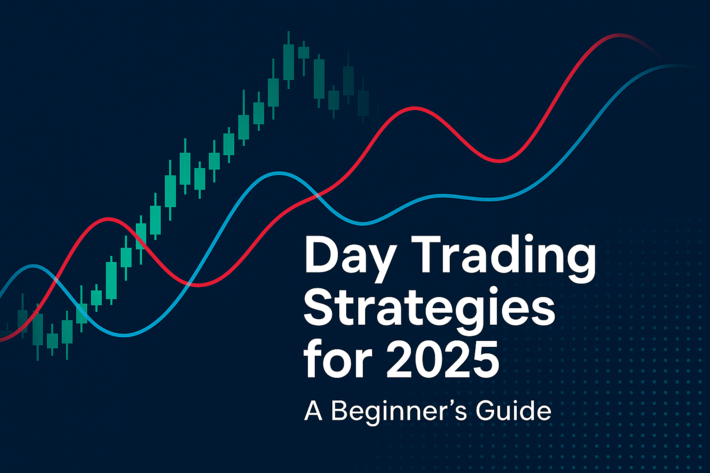Top 10 Options Trading Strategies
Options trading has exploded in popularity in recent times, offering incredibly high profit potential, at an equally high risk.
In essence, an option is a financial contract that grants the holder the right, but not the obligation, to buy or sell an underlying asset at a predetermined price before or at a specified expiration date.
The two primary types of options are call options and put options. The former provides you with the right to buy the underlying asset, while the latter gives you the right to sell the underlying asset.
Options can be utilized for various purposes, including hedging existing positions, generating income, or speculating on market movements.
To achieve long-term success, traders have to be able to master complex mechanics and trading strategies, which we’ll list below.
Covered Call
The covered call is easily the most popular conservative strategy employed by options traders, especially those that are long-term stockholders.
It is used to earn additional steady income and reduce volatility by selling a call option on an already owned stock and receiving a premium.
This strategy obligates the seller to deliver shares if the call is exercised, typically when the stock price exceeds the strike price at expiration.
The covered call approach works well when the markets are mildly bullish or sideways, but it also comes with the risk if your stock rises significantly, as you are obligated to sell it at the set strike price and potentially forgo further gains.
Married Put (Protective Put)
Serving as a complete opposite of the covered call strategy, the married or protective put approach involves purchasing a put option on your owned stock, with the aim of profiting from its fall and reducing the amount you lose with its decline.
This strategy is useful in highly volatile market periods, or after a major upward move in the price of the owned stock, with the expectation that it will see a price correction, limiting losses if the stock falls while allowing for full participation in any gains.
The cost of the put is the price of protection, but the investor remains exposed to upside potential.
This is an ideal strategy during periods of anticipated volatility or if you’re holding a stock after a significant rally and want to protect against reversal.
Bull Call Spread
This strategy is used in moderate-upside markets, and involves the purchase of a call option at a lower strike, with the intent of selling a higher-strike call option with the same expiration date.
It is best-suited for times when you expect only a modest rise in a stock’s price, and reduces the cost compared to a standard long call, while also capping both the upside and downside.
Because gains are capped at the upper strike, it's best employed when you have a confident but conservative view of the price movement. For example, if a stock trades at $100 and you believe it could reach $110 in a month, a bull call spread using the $100/$110 strikes can deliver a solid return with limited risk.
Bear Put Spread
As a mirror strategy to the bull call spread, the bear put spread is used in bearish market conditions, with the aim of profiting on a modest decline of your owned stock when you expect its price to gradually decline.
With a bear put spread, you limit both the potential loss and gain through buying a higher-strike put and selling a lower-strike put with the same expiration.
This strategy reduces the net cost of buying a put outright, making it a useful tool for traders who want defined-risk bearish exposure. It profits if the stock closes near the lower strike at expiration, and the loss is limited to the net premium paid.
Iron Condor
This is another popular strategy for low-volatility markets, allowing you to collect premium income when your stock trades sideways.
The Iron Condor is generally a neutral approach to options trading, combining four a bull put spread and a bear call spread, using four options to collect net premium and profiting from the asset staying between two middle strike prices until expiration.
While the maximum gain is limited to the total premium received, the maximum loss is also known and capped by the distance between the spreads. Iron condors are particularly attractive during earnings off-seasons or when macroeconomic news is unlikely to shake markets.
The best-case scenario is when the stock closes between the inner strike prices, making all options expire worthless.
Long Straddle
The long straddle is essentially a high-volatility, direction-neutral strategy.
It involves purchasing both a call and a put at the same strike price and expiration, with the goal of profiting from major movements in either direction.
It is best-used during or after those big events that impact the price of a stock in a meaningful way, like earning releases, central bank announcements or even court rulings.
The profit potential with this approach is theoretically unlimited, as it depends on the size of the movement, but the strategy itself is not cheap, and requires impeccable timing.
For the trade to work, the stock needs to move far enough from the strike price to offset the cost of both premiums. If the price remains near the strike, the options decay, and the trader suffers a loss.
The risk here is not in the movement itself, but in the potential lack of movement in the stock’s price.
Timing is therefore crucial, as you need to enter just before a major event increases the chance of success, which in turn also raises the cost due to higher implied volatility.
Long Strangle
The long strangle approach is designed to be a more cost-effective variation of the straddle strategy, as you buy an out-of-the-money call and an out-of-the-money put instead of buying a call and put at the same strike prime.
By trading this way, you reduce the total premium paid, while also requiring a larger move in the stock to reach profitability.
Strangles are often preferred when options premiums are expensive or when volatility is already elevated.
Traders use strangles ahead of binary events, such as court decisions, M&A rumors, or product launches, where the only thing that matters is whether the stock moves big, not in which direction.
The break-even range is wide, so the move needs to be substantial to offset the double premium paid.
Protective Collar
This is easily one of the most disciplined approaches you can use when trading options, as with the protective collar strategy you lock in gains while continuing to hold a stock, making the strategy highly useful to long-term investors, especially after a large stock rally, or to those who want to hedge risk while maintaining their stock position.
As an investor, you are protected below the put strike, but must sell above the call strike, providing you with a peace of mind and a clear exit strategy as well, as the cost of the put is usually offset entirely by the call.
Essentially, the put provides downside protection while the call helps offset its cost by collecting a premium.
This strategy is ideal after a strong run-up in a stock’s price when the investor wants to lock in gains but still allow for limited upside.
Iron Butterfly
The iron butterfly strategy is an advanced version of the short straddle, built around the idea of selling an at-the-money call and put, while simultaneously buying an out-of-the-money call and put for protection.
The maximum gain occurs if the underlying asset expires exactly at the middle strike, as you essentially make a precise bet on price stagnation.
Compared to the iron condor, for example, the iron butterfly has a narrower profit zone but also comes with a naturally higher reward-to-risk ratio. It can be a good choice when you expect very little movement in a stock’s price and want to maximize premium capture.
The strategy benefits from high implied volatility at entry, so if volatility collapses after the trade is placed, the premium erodes quickly in the trader’s favor.
However, the iron butterfly requires precision timing and execution. A small move away from the center strike can flip the trade from profit to loss, so proper risk management is critical.
Long Call Butterfly Spread
Last spot on our list is reserved for the long call butterfly spread, which can be used when you expect the price of a stock to remain near a particular point.
To trade this way, you buy one lower-strike call, sell two at-the-money calls and buy one higher-strike call, making it a cheaper setup than straight calls or straddles, with the maximum profit potential being at the point when the asset closes at the middle strike.
The upside here is capped, but can be highly efficient, while the downside is limited to the net premium paid.
Conclusion
As you can see, there is no shortage of viable options trading strategies to employ when trading this way.
There are of course even more approaches you can use, but the ones we listed each serve a unique purpose, and represent a well-rounded arsenal that an active investor can use, regardless of your experience level.
Just make sure to understand all the risks, manage them properly and apply the right strategy for your current trading objective, and never forget to trade wisely and responsibly, and only through a trusted broker, which you can find on our dedicated options trading platforms page.
I have always thought of myself as a writer, but I began my career as a data operator with a large fintech firm. This position proved invaluable for learning how banks and other financial institutions operate. Daily correspondence with banking experts gave me insight into the systems and policies that power the economy. When I got the chance to translate my experience into words, I gladly joined the smart, enthusiastic Fortunly team.





